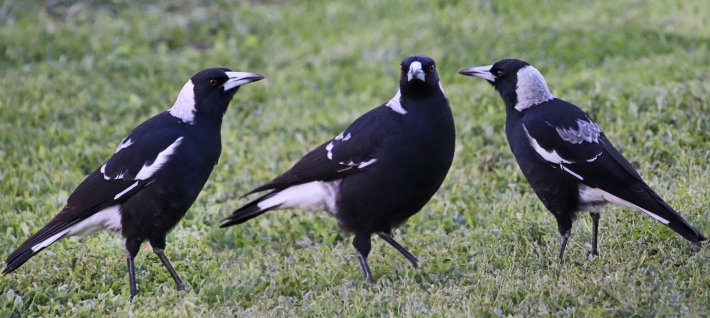University of New England academic and internationally renowned avian expert Emeritus Professor Gisela Kaplan explains that while tool use in birds has been extensively researched and documented, it is play behaviour that may be hold the key to brain size increases.
Professor Kaplan’s study on play behaviour and brain size in birds focused exclusively on Australian birds and included tool using behaviour and life span as a comparison.
“Despite research that suggests a strong correlation between cognition and tool use in birds, my study didn’t find any significant difference in relative brain mass, or in lifespan, between tool-using and non-tool using birds,” Professor Kaplan said.
“In contrast, I found clear statistical differences in relative brain mass between birds that engaged in play behaviour and birds that didn’t.”
For the purposes of her study Professor Kaplan differentiated between two kinds of play behaviour: non-social play (consisting of solo play and object play) and social play.
Non-social play involves solitary play, including a wide range of behaviours such as running, jumping, hanging and even rolling, and object play when birds play with small objects such as sticks and stones. Social play involves two or more birds playing together.
“Social play was associated with both the largest brain mass relative to body mass and with the longest lifespan,” Professor Kaplan said.
“Such interactions have been observed in fewer species, mostly parrots and corvids, but also include magpies, and is less widespread than non-social play, whereas tool using behaviour is more widespread across species, including raptors, parrots and a wide range of songbirds and has even been reported in waders and shorebirds.”
Professor Kaplan firstly compared the lifespan of species that engaged in play to species that did not, and found players lived almost twice as long as non-playing species.
Next, she separated the data for the playing group into social vs. non-social play and found the association between longer lifespan and playing only applied to the social playing group. There was no significant difference between the data for non-social players and species that did not play.
She further found players, both social and non-social, had bigger brain mass relative to body size than non-players. Data for parrots were analysed separately to avoid bias in favour of parrots but both parrots and non-parrots showed the same significant results: players had bigger brains compared to non-players, adjusted by body size.
“My research showed that any form of play seems to matter in terms of brain size. Even non-social playing was associated with increased brain mass but to a lesser degree than social play.”
Professor Kaplan believes that is easy to draw false conclusions relating to tool use and cognitive behaviours since many of the tool using species tested so far also play.
“My results suggest that the connection between using tools and cognitive ability may not hold when the silent variable, play behaviour, is not taken into account.”
Professor Kaplan’s research, Play behaviour, not tool using, relates to brain mass in a sample of birds, has been published by Nature Research in Scientific Reports and can be accessed here: https://rdcu.be/cbeV6


